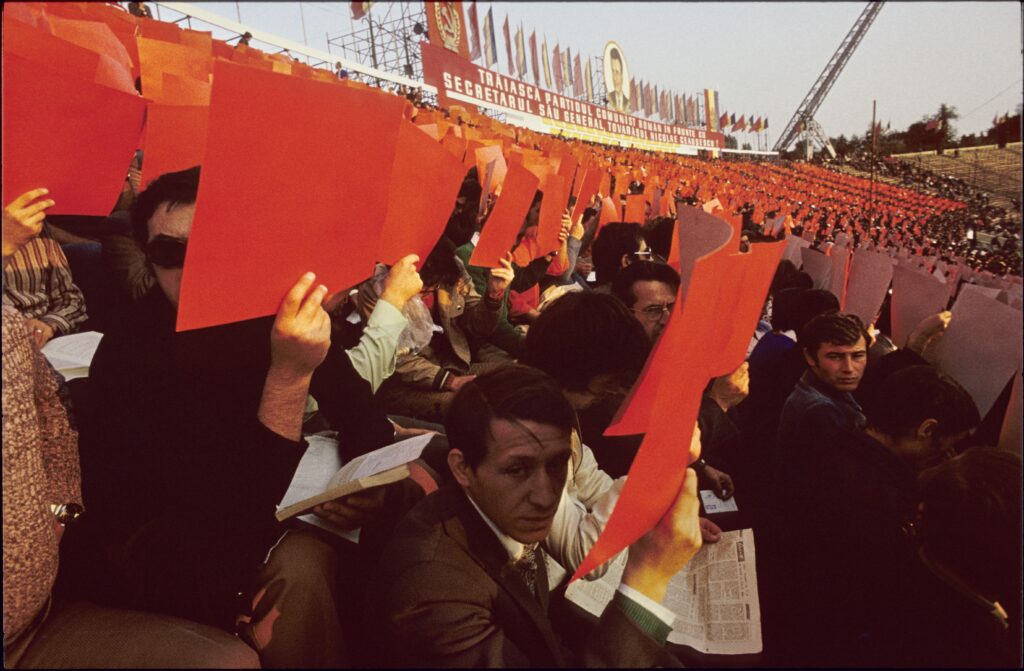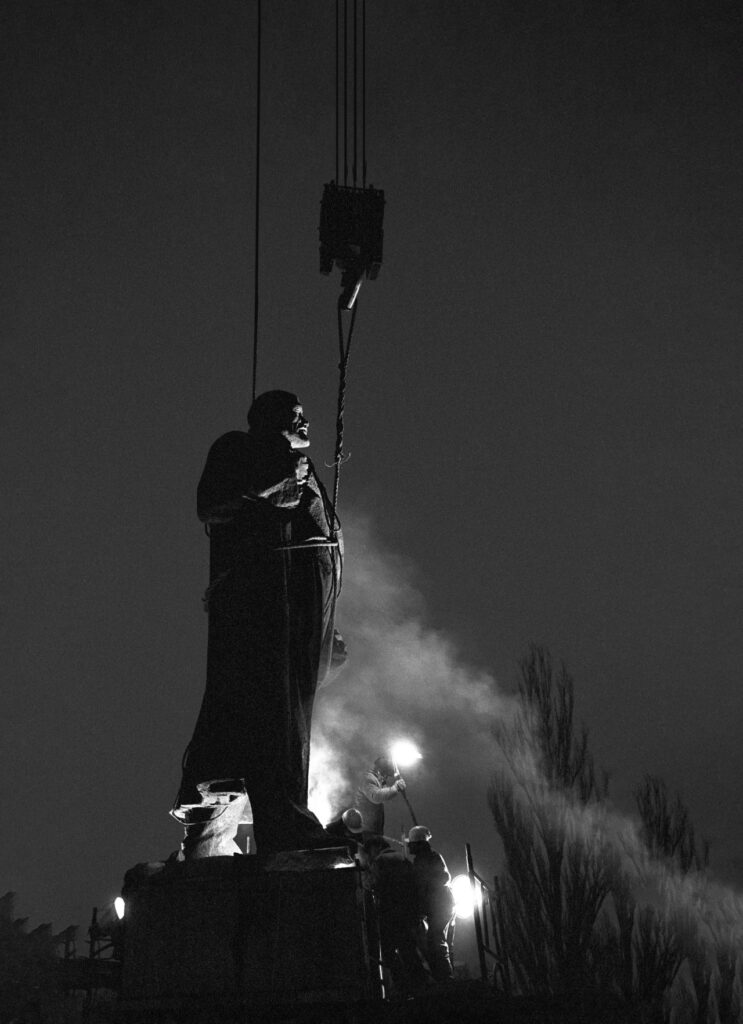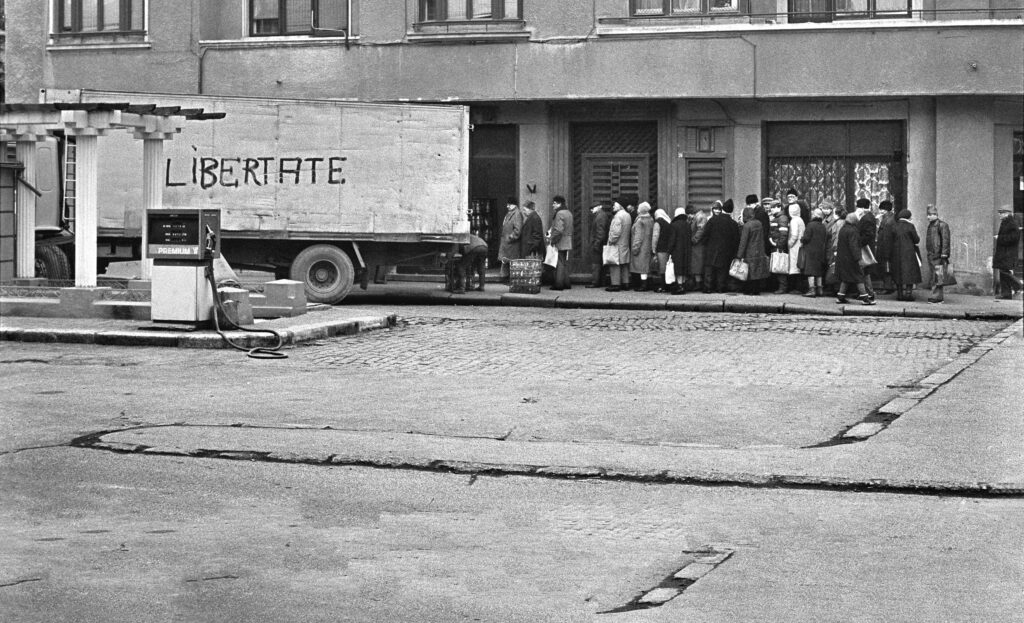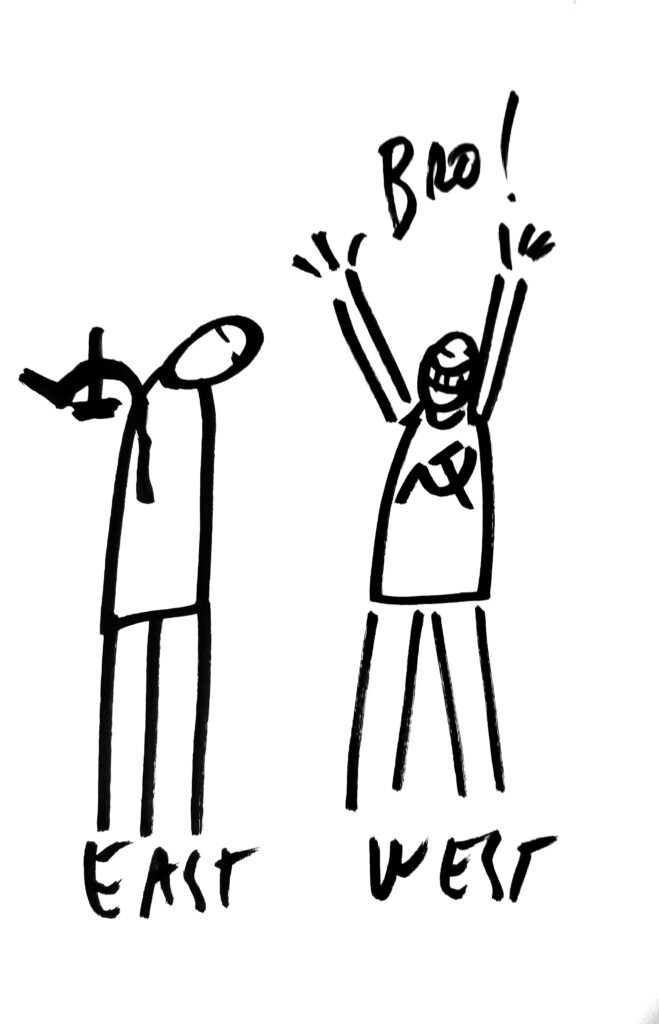17 oktober – 13 december, 2024

The tenth exhibition at Art Space Södertörn presents yet another show addressing urgent issues evoked by the present geo-political situation in Europe. In the exhibition curated by the British curator and scholar Uschi Klein, two bodies of work are in dialogue with each other and the visitor. One consists of photographs by Andre Pandele (b. 1945), which he took during the 1970s and 1980s in Romania, and the other of wall drawings by Dan Perjovschi (b. 1961). Mixed with graffiti, this key artist of the global post-1989 art scene draws directly on the walls of art museums and galleries across the world. At Södertörn, he will create a site-specific work directly in the gallery.
(Svensk text längre ned på sidan.)
The Romanian Revolution of 1989 was a violent key moment in the country’s history that brought its people democracy after 42 years of communist rule, which resonated with the situation in the Post-soviet Europe as a whole. The 1980s had been particularly harsh in Romania: a severe austerity programme was implemented by Nicolae Ceauşescu (head of state 1967-1989) to pay off foreign debt as fast as possible. As a result there was a drastic decline of living standards. It was also a time of destruction, especially in Bucharest, where whole neighbourhoods and areas were bulldozed to build the second largest government building in the world, ironically called the ‘House of the People’. Thus, the population suffered a major social crisis and unrests were increasingly mobilised across the country, triggering nation-wide protests in December of 1989, which culminated in the arrest and execution of Ceauşescu and his wife Elena.


In Witnessing pre/post Revolution in Romania, the two Romanian artists, Andrei Pandele and Dan Perjovschi, reflect on what this exhibition proposes as a pre/post juncture at that moment, by creating a dialogue that aims at engaging the audience both emotionally and critically through wit and humour. Pandele’s photographs and Perjovschi’s drawings should however, not primarily be seen as a political testimony and commentary of then and now, the past and present. Instead, by bringing Pandele and Perjovschi together, this exhibition intends to expose the audience not only to nuances of Romania’s recent history, but also to contemporary issues that are inextricably linked to the past.

An architect with a keen eye for photography, Pandele took most of his photographs to record the country’s changes during the 1970s and 1980s. His photographs are poignant reminders of what everyday life looked like for the majority of Romanians during that time: queuing was a daily necessity to buy basic food items like bread, cooking oil, eggs, flour, cheese and meat; doing ‘patriotic work’ like clearing snow-covered streets was expected; the weekly ration of petrol for private cars meant catching overcrowded trams and busses; and constructions of apartment blocks and large avenues were seen in cities and across the country. In capturing these different glimpses of life, Pandele created an impressive body of work that was fraught with danger: during communism, there was a penalty of six years of imprisonment for taking pictures of that nature.

Similarly critical of the regime was Perjovschi during the 1980s. A prominent member of Atelier 35 Oradea, a network of spaces that were dedicated to experimental art and organised weekly exhibitions as an act of dissidence, Perjovschi has become famous for his site-specific drawings. Mixed with graffiti, he draws directly on the walls of art museums and galleries across the world, which gives his work an ephemeral nature. They contain layers of meanings and express a view of the world with political and contemporary commentaries.
The exhibition is organised with support from the board of the Critical and Cultural Theory research area.
Bios:
Uschi Klein is a Senior Lecturer in the School of Art and Media at the University of Brighton, UK, and has previously been a Visiting Research Fellow in Media and Communication Studies at Södertörn University. Klein is also active as a photographer and exhibition curator.
Andrei Pandele (b. 1945 in Romania) is a retired architect who developed an interest in photography in his adult life. This enabled him to secretly document everyday life in Romania in the 1970s and 1980s. His first major exhibition was called Forbidden Photos and Personal Images (2007) at the National Museum of Contemporary Art.
Dan Perjovschi (b. 1961 in Romania) made his breakthrough after the Romanian Revolution of 1989 and now works internationally. His expression is humorous, subversive, textual and comic, often working with text and drawings directly in the exhibition space. Perjovschi exhibited in the seminal exhibition After the Wall (1999, Moderna Museet), and most recently participated in Documenta 15, 2022.
Art Space Södertörns tionde utställning kretsar kring angelägna frågor i Europas aktuella geopolitiska situation. Två konstnärskap är satta i dialog med varandra. Ett består av fotografier av Andrei Pandele (f. 1945), tagna under 1970- och 1980-talen i Rumänien, och det andra av väggteckningar av Dan Perjovschi (f. 1961). Blandat med graffiti, ritar Perjovschi direkt på väggarna i konstmuséer och gallerier över hela världen. På Södertörn kommer han att skapa ett platsspecifikt verk. Utställningen är curerad av Uschi Klein, University of Brighton.
Den rumänska revolutionen 1989 var en våldsam händelse i landets historia som gav folket demokrati efter 42 år av kommunistiskt styre. 1980-talet hade varit särskilt hårt i Rumänien: ett strängt åtstramningsprogram genomfördes av Nicolae Ceauşescu (vid makten 1967-1989) för att betala av utlandsskulder så snabbt som möjligt. Resultatet blev en drastisk nedgång i levnadsstandarden. Det var också en tid av destruktion, särskilt i Bukarest, där hela kvarter och områden jämnades med marken för att bygga den näst största regeringsbyggnaden i världen, ironiskt kallad ‘Folkets hus’. Befolkningen led och oroligheter mobiliserades alltmer över hela landet. Det utlöste landsomfattande protester i december 1989, som kulminerade i arresteringen och avrättningen av Ceauşescu och hans fru Elena.
I Witnessing pre/post Revolution in Romania reflekterar de två rumänska konstnärerna Andrei Pandele och Dan Perjovschi över det som denna utställning föreslår är en pre/post-skiljelinje för det ögonblicket. Syftet är att med kvickhet och humor skapa en dialog, genom vilken publiken kan engageras både känslomässigt och kritiskt. Pandelés fotografier och Perjovschis teckningar bör dock inte främst ses som ett politiskt vittnesmål. Istället, genom att föra samman Pandele och Perjovschi, avser utställningen att exponera publiken inte bara för nyanser av Rumäniens historia, utan också för samtida frågor som är oupplösligt kopplade till det förflutna.
Utställningen är framtagen med stöd från Kritisk kulturteori, ett forskningsområde vid Södertörns högskola.
Bios:
Uschi Klein är universitetslektor vid School of Art and Media vid University of Brighton, Storbritannien, och har tidigare varit gästforskare i medie- och kommunikationsvetenskap vid Södertörns högskola. Klein är även verksam som fotograf och utställningskurator.
Andrei Pandele (f. 1945 i Rumänien) är en arkitekt som i vuxen ålder började intressera sig för fotografi. Det gjorde det möjligt för honom att i hemlighet dokumentera vardagslivet i Rumänien på 1970- och 1980-talen. Hans första stora utställning hette Forbidden Photos and Personal Images (2007) och visades på National Museum of Contemporary Art.
Dan Perjovschi (f. 1961 i Rumänien) fick sitt genombrott efter den rumänska revolutionen 1989 och arbetar nu internationellt. Hans uttryck är humoristiskt, subversivt, textuellt och komiskt. Perjovschi ställde ut i den banbrytande utställningen After the Wall (1999, Moderna Museet) och deltog i Documenta 15, 2022, bland många andra utställningar.